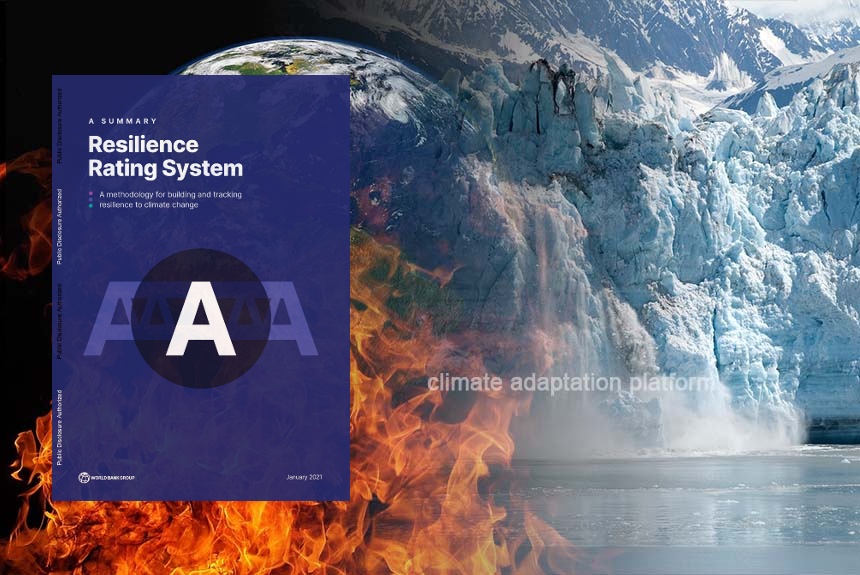The escalating dangers that climate change poses call for significant investments in building resilience and climate adaptation
This is crucial for safeguarding the progress made in development and enhancing the ability of communities and nations to anticipate and cope with various disruptions, minimize vulnerability, and expedite recovery from impactful events.
Both public and private organizations are now creating tools to analyze climate risks and measure resilience. These tools help identify the potential impacts of investments and policies related to climate change at all levels, from international to local.
In this context, the World Bank Group developed the “Resilience Rating System” (RRS) to help guide investment decisions and improve climate resilience in project design and outcomes, along with an accompanying climate risk stress testing method and tool.
The RSS methodology and set of resilience metrics involved an extensive consultation process that aims to help decision-makers and project developers integrate climate resilience considerations into their investments.
The RRS is unique in that it provides guidance and specific criteria to assess resilience along two complementary dimensions of project design:
First, it considers the resilience of the project: rating the confidence that expected investment outcomes will be achieved despite climate and disaster risks based on whether a project has considered these risks and adaptation measures in its design and
Second, it considers resilience through the project: rating a project’s contribution to the resilience of beneficiaries, communities, and systems based on expected outcomes, such as a new social protection mechanism helping a community deal with shocks or a new road helping communities evacuate before a storm; and driving transformational adaptation.
The RSS was successfully piloted in 21 projects across 21 countries with a total investment of $2.92 billion. These projects cover eight sectors: energy, transport, urban, human development (health, education, social protection, and jobs), agriculture, water, and environment.
The RRS evaluates and rates investment projects from C to A+ based on their resilience attributes in two complementary dimensions – the resilience of the project and the project’s contribution to resilience in the broader community and systems. Combining the two-dimension ratings provides an overall project rating, from CC to A+A+.
The RRS team developed an accompanying methodology, the Excel-based Risk Stress Testing (RiST) tool, to help projects achieve an A rating in the resilience of dimension.
The World Bank paper “Resilience Rating System: Synthesizing Key Lessons from IDA19 Piloting” synthesized the key lessons learned from these pilot projects.
The World Bank released two publications on climate risk screening and resilience metrics. These documents aim to help both public and private entities incorporate climate change considerations into their projects, paving the way for resilient investments and the effective mobilization of capital:
Resilience Rating System. (February 2021).
The RRS and associated tools are vital in guiding the integration of climate resilience into investment projects.
As we progress, continued collaboration and innovation in resilience-building initiatives will be crucial in addressing the multifaceted challenges of climate change, ensuring that communities and nations are better prepared to face future uncertainties.
Source:
Resilience Rating System. A Methodology for Building and Tracking Resilience to Climate Change. Synthezising Key Lessons from IDA19 Piloting. (2024, April). The World Bank. Retrieved from https://openknowledge.worldbank.org/server/api/core/bitstreams/8e014f22-fd1f-4967-b3f1-b31c998e0806/content
Resilience Rating System (RRS). (2024 April 25). The World Bank. Retrieved from https://www.worldbank.org/en/topic/climatechange/brief/resilience-rating-system-rrs?cid=ECR_LI_worldbank_EN_EXT
Risk Stress Test Tool. (2021, June 20). The World Bank. Retrieved from https://www.worldbank.org/en/topic/climatechange/brief/risk-stress-test-tool
Hallegatte, S., Anjum, R., Avner, P., Shariq, A., Winglee, M., & Knudsen, C. (2021). Integrating Climate Change and Natural Disasters in the Economic Analysis of Projects: A Disaster and Climate Risk Stress Test Methodology. World Bank.
Morin Floissac, V. M., Li, J., Siddiqi, S. N., & Shabahat, E. S. (2024). Resilience Rating System: A Methodology for Building and Tracking Resilience to Climate Change-Synthesizing Key Lessons from IDA19 Piloting.



Leave a Reply